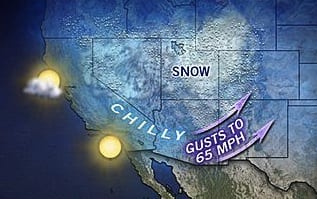California’s over reliance on fossil fuels for generating electricity, notably natural gas, led the state’s electricity system operator to call an emergency on Thursday, 6 February. The move called on Californians throughout the state to conserve electricity and natural gas.
Because of heating and power demands in the Northeast US due to the extreme cold weather, natural gas was in short supply in Southern California, leading California’s Independent System Operator (CaISO) to call a statewide “Flex Alert”. The alert is the lowest level in CaISO’s emergency notifications.
The shortage comes at time when the continent believes – rightly or wrongly – that it is awash in natural gas. President Obama has often repeated the phrase that the US has a “100-year supply of natural gas”. Whether this is true or not, the gas does nothing for anyone in the ground. It has to be extracted, processed, and transported to where it is needed. Therein lies the rub.
Thus, it may come as a shock to North Americans – and to observers overseas – that there could be a gas shortage – anywhere – on the continent known for “fracking” its way to an “energy independence” nirvana.
Apparently, natural gas isn’t quite as reliable as the public has been led to believe if investment in infrastructure or transmission and storage doesn’t keep pace with demand.
Despite California’s braggadocio about its green credentials, the state that has grown increasingly dependent on natural gas for power generation and resisted efforts to increase its renewable energy generation.
There was no shortage of generation from new renewables Thursday. Geothermal, biomass, biogas, and small hydro generated a steady 1,700 MW throughout the day or nearly 6% of peak demand. Meanwhile solar photovoltaics (solar PV) peaked at 1,800 MW around noon and wind power reached 2,700 MW during the evening peak period. Altogether, renewables generated nearly 15% of total consumption on 6 February. Wind energy provided nearly half of all renewable generation during the 24-hour period; geothermal, nearly 25%; solar PV, 12%.
Critics of wind and solar energy often use the old canard that California can’t move further toward renewable generation until storage is available. However, the mini crisis on Thursday illustrates that natural gas is equally unreliable as well if there is insufficient pipeline capacity or local storage.
Many doubt that North America’s gas boom is as robust or as long-lived as its promoters, including those in the White House, claim. Just as the gas boom in East-Central Indiana collapsed a century ago after less than two decades of feverish development, leaving industries and communities across the Midwest scrambling for fuel to power their factories, California has grown dangerously complacent about its growing dependence on a fossil fuel.
Thursday’s Flex Alert should remind everyone that the state is vulnerable. With the emergency abated, now is an opportune time to prepare California for the inevitable gas bust–not when it strikes in a more lethal and devastating manner as in the California power crisis of the early 2000s. If we’ve learned any lessons from that disaster is that the state needs to move toward 100% renewable energy as quickly as possible to break our dependency on fossil-fired generation of electricity. Natural gas should be reserved for heating and back up power or the state will find, as did Hoosiers at the turn of 19th century, squandering a valuable fossil fuel for cheap rewards today only leads to ruin tomorrow.


This feed-in tariff news update is made in cooperation with the Institute for Local Self-Reliance. The views expressed are those of Paul Gipe and are not necessarily those of ILSR.
Reproduced with permission










